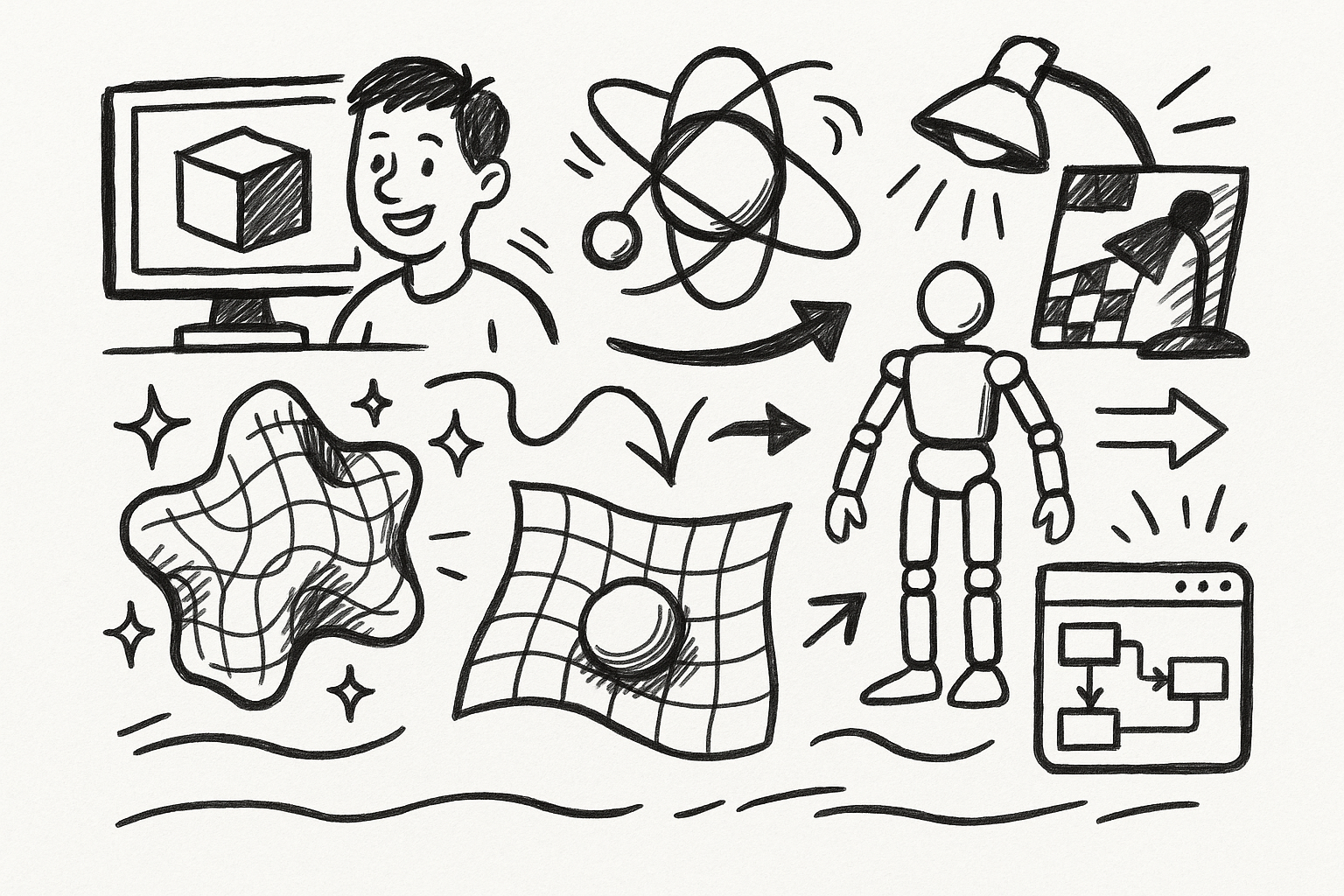Your Cart is Empty
Customer Testimonials
-
"Great customer service. The folks at Novedge were super helpful in navigating a somewhat complicated order including software upgrades and serial numbers in various stages of inactivity. They were friendly and helpful throughout the process.."
Ruben Ruckmark
"Quick & very helpful. We have been using Novedge for years and are very happy with their quick service when we need to make a purchase and excellent support resolving any issues."
Will Woodson
"Scott is the best. He reminds me about subscriptions dates, guides me in the correct direction for updates. He always responds promptly to me. He is literally the reason I continue to work with Novedge and will do so in the future."
Edward Mchugh
"Calvin Lok is “the man”. After my purchase of Sketchup 2021, he called me and provided step-by-step instructions to ease me through difficulties I was having with the setup of my new software."
Mike Borzage
Enhancing Human-Centered Design Through Advanced Software Tools and Emerging Technologies
November 02, 2024 6 min read


Human-centered design (HCD) is a design philosophy and process that deeply prioritizes the perspectives, needs, and limitations of the end-users at every stage of the product development cycle. Rooted in empathy and a profound understanding of the human experience, HCD aims to create solutions that are not only functional but also accessible, intuitive, and delightful to use. In an era where technology permeates every aspect of our daily lives, the importance of HCD in crafting user-friendly products cannot be overstated. With the rapid evolution of digital technologies, users have become more discerning, expecting seamless interactions and personalized experiences. This shift has propelled user experience (UX) and user interface (UI) design to the forefront of product development, emphasizing the necessity of designs that are both aesthetically pleasing and highly functional.
Software tools have significantly evolved to support and enhance HCD principles, providing designers with sophisticated capabilities to engage with users more effectively and iterate on their designs efficiently. These tools offer a plethora of features, from high-fidelity prototyping and real-time collaboration to advanced user testing and feedback mechanisms. They empower designers to simulate user experiences closely, gather actionable insights, and adapt their designs accordingly. In today's digital landscape, where competition is fierce and user loyalty is hard-won, leveraging these tools is crucial for creating products that stand out and resonate deeply with target audiences.
Understanding the synergy between human-centered design principles and the software tools that support them is essential for any designer aiming to succeed in the modern market. By integrating these tools into the design process, designers can ensure that their products not only meet but exceed user expectations. The following sections delve into the core principles of HCD, explore the software tools that facilitate these practices, and examine how emerging technologies are shaping the future of human-centered design.
Understanding Human-Centered Design Principles
Human-centered design is anchored in several key principles that collectively guide designers toward creating products that genuinely serve users' needs. These principles include:
- Empathy: Immersing oneself in the user's environment to deeply understand their experiences, challenges, and motivations. By cultivating empathy, designers can move beyond assumptions and biases, gaining insights into the real-world contexts in which their products will be used.
- Active User Involvement: Engaging users early and often to collect invaluable feedback, uncover hidden needs, and validate design decisions. Methods such as user interviews, surveys, and participatory workshops facilitate this involvement, ensuring that products align closely with user expectations.
- Iterative Design: Refining products through successive cycles of testing and feedback. This approach embraces the reality that initial designs are hypotheses to be tested and improved upon, encouraging experimentation and learning.
User research and feedback are the lifeblood of human-centered design. Conducting thorough user research helps designers understand the target audience's demographics, behaviors, motivations, and pain points. Techniques such as contextual inquiries, ethnographic studies, and usability testing provide rich qualitative and quantitative data. By analyzing this data, designers can create user personas and journey maps that inform design decisions and prioritize features that deliver the most value to users.
Moreover, incorporating feedback loops ensures that users have a voice in shaping the product. Regularly gathering and acting upon user feedback closes the gap between user expectations and the actual product experience. It helps identify usability issues, uncover unmet needs, and validate the effectiveness of design solutions. This continuous engagement fosters trust and builds stronger relationships between users and designers, ultimately leading to products that are more likely to succeed in the market.
Software Tools Supporting Human-Centered Design
The practice of human-centered design has been greatly enhanced by a range of software tools that streamline the design process and facilitate user engagement. Some of the key categories include:
- Prototyping Tools: Figma, Sketch, and Adobe XD enable the creation of interactive, high-fidelity prototypes that closely mimic the functionality of the final product. They offer features such as responsive design capabilities, component libraries, and real-time collaboration.
- User Testing Platforms: UsabilityHub and UserTesting provide platforms for gathering user insights and validating design decisions through remote testing methodologies such as five-second tests, preference tests, and recorded usability sessions.
- Collaboration Tools: Miro and Trello facilitate effective communication and project management among team members through visual collaboration platforms and kanban-style board systems.
The features that enhance user experience and facilitate user feedback within these tools are critical. For example, functionalities such as:
- Commenting and Annotation: Allowing stakeholders to provide direct input on specific design elements, fostering clear communication and prompt resolution of issues.
- Version History and Branching: Enabling designers to explore different design directions without losing previous work, supporting the iterative design process.
- Integration Capabilities: Allowing seamless workflows between different tools, such as syncing design updates with development teams using tools like Zeplin or InVision Inspect.
Designers use these tools to iterate on their designs by rapidly prototyping concepts, testing them with users, and implementing feedback. This agile approach reduces the time and cost associated with lengthy development cycles and minimizes the risk of launching products that do not meet user needs. By leveraging the capabilities of modern software tools, designers can focus more on creativity and user engagement, rather than being bogged down by technical limitations or inefficiencies in the design process.
The Impact of Emerging Technologies on HCD
Emerging technologies such as artificial intelligence (AI) and machine learning are increasingly influencing human-centered design by offering new ways to enhance user experience and streamline the design process. AI-powered design tools can automate routine tasks, such as generating layout suggestions, optimizing design elements for accessibility, or predicting user behavior based on data patterns. Machine learning algorithms can analyze vast amounts of user interaction data to identify trends, preferences, and pain points that might not be evident through traditional research methods.
Data analytics is a powerful tool for understanding user behavior and preferences. Advanced analytics platforms can process user data from multiple sources, such as website interactions, mobile app usage, and social media engagement. By applying techniques like segmentation, cohort analysis, and predictive modeling, designers can uncover deep insights into user needs and motivations. This information guides the prioritization of features, informs design decisions, and helps in crafting marketing strategies that resonate with target audiences.
Future trends in HCD software tools point toward greater integration of immersive technologies like augmented reality (AR) and virtual reality (VR). These technologies offer new ways to simulate user experiences and gather feedback. For instance:
- Integration of AR and VR in User Testing: Designers can use VR environments to test spatial designs or simulate real-world contexts for product interactions, while AR can overlay digital information onto the physical world, enhancing user experiences.
- Enhanced Accessibility Features: Software platforms are incorporating functionalities that help designers create products accessible to diverse user groups, including simulations for color blindness, screen reader compatibility checks, and adherence to accessibility standards like WCAG.
These trends reflect a broader shift towards more immersive, inclusive, and intelligent design tools that support the core principles of human-centered design. By embracing these technologies, designers can push the boundaries of innovation and create products that not only meet but exceed user expectations.
Conclusion
The significance of human-centered design in creating effective UX/UI cannot be overstated. By placing the user at the heart of the design process, designers can create products that genuinely meet user needs, providing value and fostering satisfaction. The adoption of HCD principles leads to products that are not only functional but also meaningful and engaging, enhancing user loyalty and competitive advantage.
The continuous evolution of software tools and technologies plays an instrumental role in enabling designers to prioritize the user experience. From advanced prototyping tools and user testing platforms to AI-driven analytics and collaborative environments, these tools empower designers to work more efficiently and effectively. They support the core principles of HCD by facilitating empathy, user involvement, and iterative design, ensuring that user feedback is integrated throughout the product development lifecycle.
As the field of design continues to evolve, embracing HCD practices becomes ever more critical. Designers are encouraged to leverage the latest tools and technologies to enhance their workflows, engage with users more deeply, and deliver products that stand out in the marketplace. By staying abreast of emerging trends such as AI, AR, VR, and advanced analytics, designers can push the boundaries of what is possible and contribute to a more user-centric digital landscape.
The call to action is clear: prioritize human-centered design, leverage the powerful tools available, and commit to continuous learning and adaptation. By doing so, designers will not only create better products but also contribute to a more inclusive and user-friendly world.
Also in Design News

Revolutionizing 3D Design: Exploring Five Groundbreaking Innovations in Cinema 4D
August 31, 2025 4 min read
Read More
Revolutionizing Telecommunications: The Rise of Advanced Design Software
August 31, 2025 16 min read
Read More
Cinema 4D Tip: Optimizing 2D Matte Integration with Projection Man in Cinema 4D
August 31, 2025 3 min read
Read MoreSubscribe
Sign up to get the latest on sales, new releases and more …


